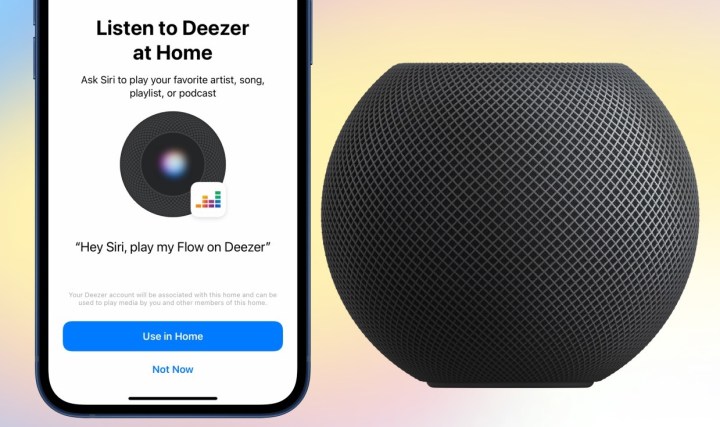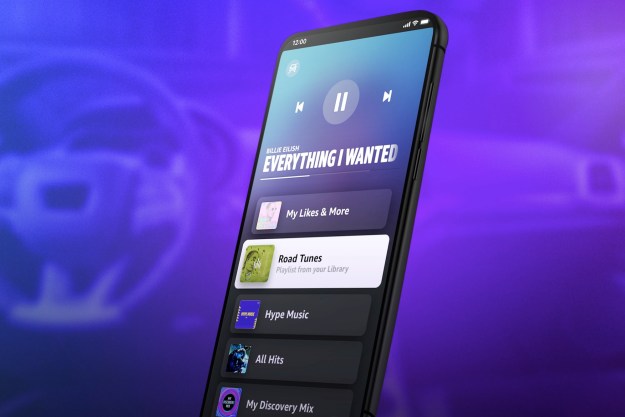
Music streaming service Deezer can now be added to the HomePod and HomePod mini. Doing so means that if you own one of Apple’s smart speakers, you’ll be able to ask Siri to play tracks, artists, albums, favorites, or playlists. It will work for Deezer subscribers in Australia, Canada, France, Germany, Japan, Mexico, Spain, the U.K., and the U.S.
Deezer joins just a handful of third-party streaming music services that Apple allows on HomePod devices, including iHeartRadio and Pandora.
Apple has been remarkably slow at rolling out support for third-party music services on its HomePod and HomePod mini smart speakers — which may have contributed to the company’s decision to pull the plug on the HomePod. Other major smart speaker players like Google, Amazon, and Sonos all offer a greater number of music services on their devices.
The new support for Deezer on HomePod requires the latest HomePod software and at least iOS 14.3 on your iPhone or iPad. It works with all of Deezer’s subscription tiers, including Premium, HiFi, Family, and Student plans. HiFi subscribers will be able to listen to Deezer’s collection of lossless FLAC CD-quality tracks without any loss of quality.
Once Deezer has been added, you can issue voice commands like, “Hey Siri, play Bad Bunny on Deezer.” If you set Deezer as your default music service on HomePod, you can skip the “on Deezer” portion of the voice command.
Deezer subscribers have been able to ask Siri to play their tunes for a while now, but this ability was previously limited to iPhones.
The addition of Deezer is the first time that HomePod owners get to experience lossless CD-quality streaming music on their speakers without resorting to using a combination of an iOS music app, like Deezer, Amazon Music HD or Tidal HiFi, and AirPlay.
Editors' Recommendations
- What is Deezer? Features, pricing, and music quality explained
- Apple AirPlay 2 supports 24-bit lossless audio, but you can’t use it
- The Apple HomePod is back, with new smarts, and a lower price
- AirPods, Beats owners can get Apple Music free for 6 months
- How to set up a HomePod for stereo audio



